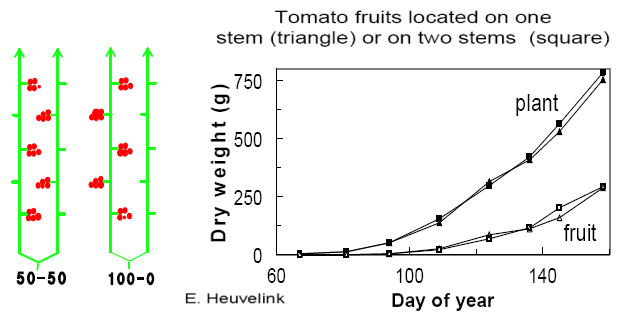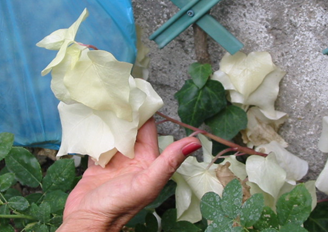Preliminary Course.
Eco-Physiology
Biomass common pool.
Biomass Common Pool
-
The biomass produced is stored in a common pool to be shared by competing organs.
Biomass partitioning is not related to an assimilate transportation pathway in the plant structure.
The following experiment carried out on tomato double stems illustrates this.
This assumption can be assessed on many crops, but fails when plant structure becomes complex (i.e. on big trees).
However, in our context, this assumption is kept in the definition of our models.

The Biomass Common Pool. (Drawing and graph: E. Heuvelink, WAGENINGEN UNIVERSITY)
- Experiment carried out on double stem tomato plants.
On the first tomato plant 50% of young fruits were pruned on both stems.
On the second plant, all fruits of the second stem were pruned.
As shown in the graph, pruning did not affect biomass production at either the fruit or whole plant levels.
Shoots with albino leaves (without chlorophyll) grow normally, taking up the assimilates from the biomass common pool.
In this case, leaves are only sinks and no longer sources.
This is illustrated here on an Ivy chimera.

Ivy chimera, with albino leaves (Photo P. de Reffye, CIRAD)
- Note the distribution and size of the white leaves are similar to those of functional ones.
